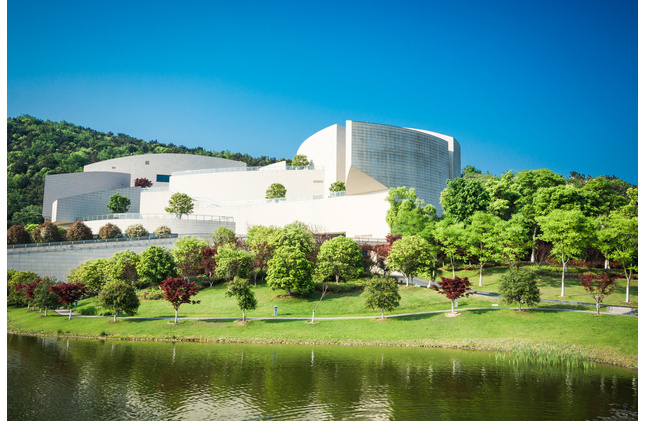
Some materials whisper; concrete roars.
Few materials in the realm of architecture have aroused so much polarized love and contempt as concrete. It is unadorned, inclement, brutally direct. And while you may be attracted to its sparse elegance or repelled by its chilly monumentality, there is no escape from the fact that concrete has emerged as a leading man in the architectural drama of the past hundred years.
The Brutalist Beginning
To speak of concrete buildings is to inevitably invoke Brutalism, the mid-20th-century movement that gave concrete its most iconic — and controversial — voice. Le Corbusier, that grand master of modernism, called for architecture that embraced béton brut — raw concrete. His Unité d’Habitation in Marseille, completed in 1952, stood like a monolith, unapologetic in scale and texture, a vertical city before its time. It was housing, yes — but also ideology cast in cement.
Soon after, governments, institutions, and universities followed suit. Concrete was cheap, durable, and promised a utopian future. But Brutalism, with its fortress-like forms and minimal ornamentation, made few friends among the general public. These were not buildings that tried to charm. They demanded your attention.
And so, the love-hate affair began.
Material Honesty or Monolithic Oppression?
Concrete is what architects have long appreciated as being honest. It is. No cladding, no discreet facade to veil its truth. What you see of concrete, you see the skeleton of the building. You see work. You see the fingerprints of scars where formwork used to be.
But critics — and they are legion — say that concrete buildings tend to feel inhuman, oppressive, and out of scale. They are likened to bunkers, prisons, or worse. In cities globally, particularly in post-war public housing, concrete has come to represent neglect, deterioration, and the collapse of top-down planning.
How did such a promising material come to be so freighted with disappointment?
Maybe it’s because concrete, if it gets into the wrong hands, becomes blunt. It does accentuate design choices — whether good or ill. While it doesn’t show imperfections with materials that can be more generous, like wood or brick, it isn’t forgiving either. A poorly scaled concrete facade not only is bad-looking but, somehow, seems tyrannical.
The Revival: From Brutal to Beautiful
But concrete is being reborn nonetheless.
A new generation of architects is reclaiming its potential — this time with precision, poetics, and purpose. Consider the work of Tadao Ando, where light cuts through smooth concrete like a scalpel. Or Herzog & de Meuron, whose concrete walls breathe with texture and pattern. Even humble residential homes are testing board-formed concrete, welcoming its tactile warmth and sculptural potential.
Now, concrete is not only brutal anymore; it can be elegant, meditative, even sensual. It’s being combined with glass, wood, and plants to create more integrated, human-scaled spaces. The same material that once split communities now unites architectural visions across continents.
Sustainability and the Ethical Dilemma
But there’s an elephant in the room: carbon.
Concrete accounts for almost 8% of world CO₂ emissions. Its carbon footprint is simply enormous. Now that architects and engineers must contend with the very real prospect of climate change, concrete has also become an ethical issue. Are we still allowed to build using it on current levels? Should we?
There are rays of hope — low-carbon blends, carbon-capture technology, and circular design innovation. Some suggest that we should employ concrete judiciously, as a valuable material, not a default for everything. Others say we should retrofit and admire the concrete buildings we already have, instead of tearing them down and rebuilding.
Because, love them or loathe them, concrete buildings are made to last.
Conclusion: A Mirror in Grey
Ultimately, concrete reflects us. Our aspirations. Our failures. Our desires for permanence and control. It is the material of paradox — both noble and utilitarian, expressive and mute, lasting and imperfect.
To love concrete is not to deny its flaws, but to know its tale. To despise it is often to misread its promise. And maybe, the true beauty is in the tension between the two.
As architects, as citizens, as narrative of space — we need to ask ourselves: What will we fill the molds of tomorrow with?
